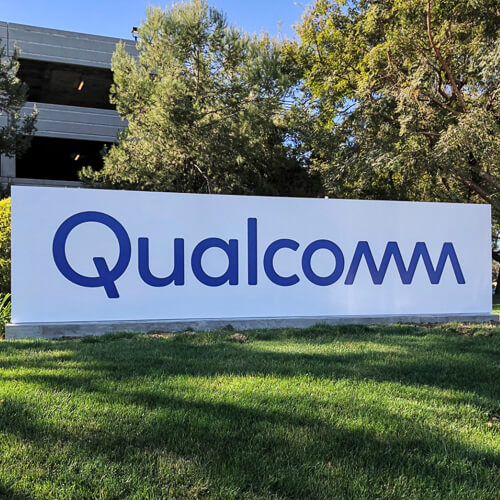Qualcomm has launched a family of 'Pro' series Wi-Fi 7 chips for high-end access points, mesh devices, gateways and premium home routers. Chips are sampling now, with commercial availability expected in about a year

After dipping its toes into the Wi-Fi 7 waters with a chip for smartphones and PCs in February, Qualcomm is taking the plunge with a full-blown ecosystem for the new, super-charged Wi-Fi standard.
Qualcomm's new lineup – called the Wi-Fi 7 Networking Pro Series – aims to hit the other side of the link, supporting high-end access points, mesh devices, gateways and premium home routers. The launch comes about three years after Qualcomm launched a Pro series for Wi-Fi 6, a move that the company says has resulted in more than 275 design wins.
Figure 1:  (Source: Qualcomm)
(Source: Qualcomm)
Qualcomm isn't the only chipmaker launching Wi-Fi 7 products. Rival Broadcom announced its own Wi-Fi 7 ecosystem in April, in the form of a handful of chips for both residential and enterprise applications.
Broadband service providers are expected to keep a close eye on Wi-Fi 7 developments to ensure that the multi-gig services they are delivering to the home (via PON, enhanced DOCSIS 3.1 networks or even the emerging DOCSIS 4.0 platform) aren't bottlenecked by the limitations of the home's wireless network.
A big leap in Wi-Fi performance
Qualcomm's new lineup focus on an emerging version of Wi-Fi is designed to tap into 1760MHz of spectrum (versus 560MHz for Wi-Fi 6) and max channel widths of 320MHz (compared to 160MHz for Wi-Fi 6). At about 10 Gbit/s per channel, the use of multiple radios on Wi-Fi is poised to pump out a PHY rate in the neighborhood of 33 Gbit/s (up from 6 Gbit/s for Wi-Fi 6). Wi-Fi 7 also employs 4K QAM (4096-QAM), a more efficient modulation scheme that delivers more bits per hertz than the 1024-QAM scheme used for Wi-Fi 6.
That kind of performance will make Wi-Fi 7 suited for premium-level products, at least in the early going.
"We see [Wi-Fi 7] populating the higher tiers of Wi-Fi networking," said Nick Kucharewski, SVP and GM, wireless infrastructure and networking, at Qualcomm. He also expects Wi-Fi 7 to have a "comfortable coexistence" with Wi-Fi 6 in the coming years.
The company notes that its Pro platform is capable of supporting more than 500 users on every band in a router, making it applicable for stadiums, enterprises and other large venues.
Kucharewski said the expectation is to see products emerge with tri-band configurations (2.4GHz, 5GHz and 6GHz bands) that utilize multiple radios within those bands. To wit, Qualcomm's Pro-branded Wi-Fi 7 ecosystems are starting out with four options/configurations:
Product | Stream Count | Peak PHY Rate | Configuration | Band Configuration |
Networking Pro 1620 Platform | 16 | 33 Gbit/s | 4+4+4+4 | Quad-band |
Networking Pro 1220 Platform | 12 | 21 Gbit/s | 4+4+4 | Tri-band |
Networking Pro 820 Platform | 8 | 16 Gbit/s | 2+2+2+2 | Quad-band |
Networking Pro 620 Platform | 6 | 10 Gbit/s | 2+2+2 | Tri-band |
(Source: Qualcomm) |
Beyond speeds and feeds
Beyond raw speed, Kucharewski said that the new product line will also focus on the "deterministic latency" of Wi-Fi 7 for interactive apps such as video conferencing and cloud gaming, as well as augmented and virtual reality apps that will rely on both low latency and some data being offloaded to the cloud.
And, in a first for Wi-Fi, Kucharewski said that the new chips would also deliver "Multi-Link" capabilities that allow for connectivity and aggregation across two or more bands, rather than having to pick one band that is providing the best performance at a given time. That capability, likely to get the most pop by combining access in the 5GHz and 6GHz bands, will also provide a low latency benefit in Wi-Fi 7, he said.
Kucharewski also touted a feature called adaptive interference puncturing that can effectively notch out parts of the bandwidth where interference is present. Qualcomm has designed the ecosystem to be configured and optimized to fit the varying amounts of bandwidth currently supported in Wi-Fi 7 on a regional basis, he added. China, for instance, has yet to open up the 6GHz band for Wi-Fi.
Qualcomm, which has shipped more than 6 billion Wi-Fi products since 2015, is currently sampling its new Pro series Wi-Fi chips but has not announced pricing or any formal commitments with device manufacturers. Broadcom paired its Wi-Fi 7 chip launch with supporting quotes from several suppliers, including Arcadyan, ASUSTek Computer, Extreme Networks, Netgear, Sagemcom Broadband, Sercomm, Technicolor and TP-Link.
If all follows historical patterns, Qualcomm's full ecosystem for Wi-Fi should reach commercial availability around a year from now, Kucharewski said.
Among other chipmakers, MediaTek performed a live demo of its Wi-Fi 7 tech in January, and MaxLinear, a chipmaker that got into the Wi-Fi game via its acquisition of Intel Corp.'s Home Gateway Platform Division in 2020, has confirmed that Wi-Fi 7 is firmly on its roadmap.
MaxLinear expects to have its silicon ready in time to participate in the Wi-Fi 7 testbed, which the Wi-Fi Alliance is expected to start conducting this summer, Will Torgerson, VP and GM of MaxLinear's Broadband Group, recently told Light Reading.
Related posts:
— Jeff Baumgartner, Senior Editor, Light Reading
About the Author(s)
You May Also Like


.jpeg?width=300&auto=webp&quality=80&disable=upscale)








